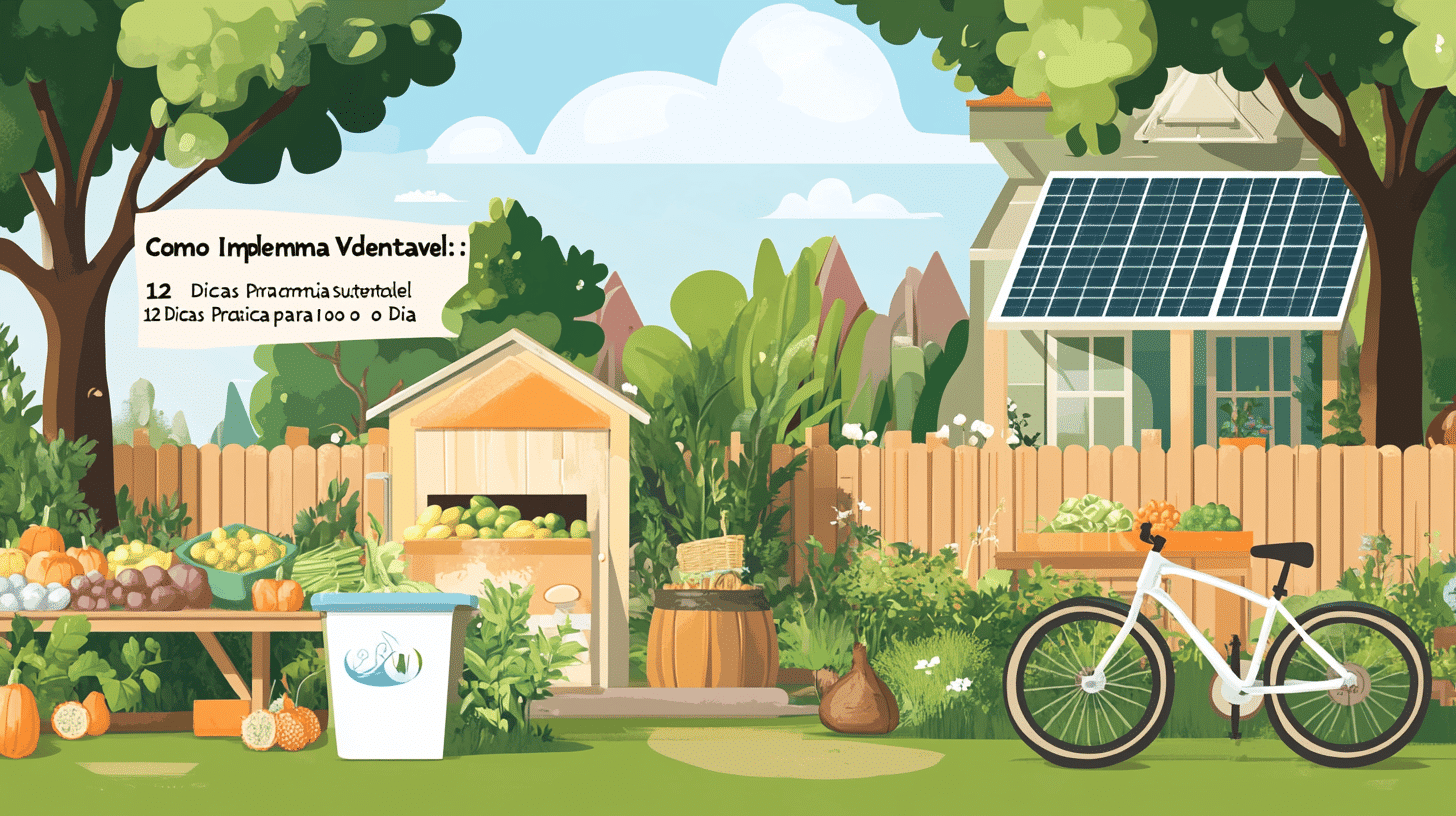A sustentabilidade não é apenas uma opção; é uma necessidade urgente para garantir um futuro saudável para nosso planeta. À medida que a consciência ambiental cresce, cada vez mais pessoas estão interessadas em adotar estilos de vida que minimizem impactos negativos no meio ambiente. Neste post, vamos explorar 12 dicas práticas que você pode implementar no dia a dia para adotar uma vida mais sustentável. Prepare-se para fazer a diferença!
1. Reduza o Uso de Plástico
O plástico é um dos maiores poluentes do nosso tempo. Uma maneira eficaz de reduzir sua dependência de plásticos é utilizando sacolas reutilizáveis para as compras, evitando itens de plástico descartável, como garrafas e canudinhos. Tente substituir esses materiais por alternativas sustentáveis, como garrafas de vidro ou de aço inoxidável.
2. Compre de Forma Consciente
Antes de realizar uma compra, questione-se se realmente precisa do item. Comprar de forma consciente significa evitar aquisições impulsivas e priorizar produtos duráveis e de qualidade. Além disso, sempre que possível, dê preferência a produtos de empresas que pratiquem a sustentabilidade em sua produção.
3. Pratique a Compostagem
A compostagem é uma ótima forma de reduzir o desperdício de alimentos e, simultaneamente, enriquecer o solo. Reserve um espaço em casa para compostar restos de frutas, vegetais e outros resíduos orgânicos. Você ficará surpreso com a quantidade de resíduos que pode ser transformada em adubo natural!
4. Incentive o Uso da Bicicleta
Sempre que possível, prefira andar de bicicleta em vez de usar o carro. Além de ser uma escolha sustentável, pedalar traz benefícios à saúde, como a melhoria da condição cardiovascular e a redução do estresse. Caso não tenha uma bicicleta, considere o uso de transporte público como uma alternativa ecológica.
5. Economize Água
A água é um recurso precioso e escasso em muitas partes do mundo. Algumas dicas para economizar água incluem: tomar banhos mais curtos, instalar arejadores nas torneiras e usar a máquina de lavar roupa apenas quando estiver cheia. Você também pode reutilizar a água da chuva para regar plantas.
6. Utilize Energias Renováveis
Se você possui a possibilidade, considere investir em fontes de energia renováveis, como energia solar. Painéis solares podem ajudar a reduzir sua conta de eletricidade e diminuir a pegada de carbono. Além disso, verifique opções de energia oferecidas pela sua companhia elétrica que utilizam fontes limpas e renováveis.
7. Opte por Alimentos Orgânicos e Locais
Alimentos produzidos localmente e que seguem práticas orgânicas são muitas vezes mais sustentáveis. Eles não apenas evitam o uso de pesticidas químicos prejudiciais, mas também reduzem a necessidade de transporte, o que contribui para a diminuição das emissões de carbono. Explore feiras de produtores locais em sua região!
8. Diminua o Desperdício de Alimentos
Evite que alimentos estraguem e se tornem lixo. Planeje suas refeições com antecedência, compre apenas o que você precisa e armazene corretamente os alimentos. Se você tem sobras de comida, experimente receitas que possam reutilizar esses ingredientes em novas refeições.
9. Faça Compras a Granel
Sempre que possível, evite produtos com embalagens excessivas e opte por comprar a granel. Muitas lojas oferecem opções a granel para grãos, especiarias e outros produtos, permitindo que você traga sua própria embalagem e reduza o lixo gerado.
10. Plante Árvores e Jardins
Plantar árvores e cultivar um jardim não só ajuda a melhorar a qualidade do ar, mas também contribui para a biodiversidade local. Se você tiver um espaço disponível, considere criar um pequeno jardim com plantas nativas que exigem menos cuidados e ajudam a atrair polinizadores.
11. Reduza o Consumo de Carne
A indústria da carne é uma grande responsável pelo aumento das emissões de gases de efeito estufa e pelo desmatamento. Considerar uma dieta com menos carne, ou até mesmo vegetariana ou vegana, pode trazer grandes benefícios para o meio ambiente. Experimente ter dias da semana sem carne e explore novas receitas baseadas em vegetais.
12. Eduque-se e Compartilhe
Por fim, nunca subestime o poder da educação. Informe-se sobre questões ambientais e compartilhe conhecimentos e dicas com amigos e familiares. Quanto mais pessoas souberem sobre a importância da sustentabilidade e suas práticas, maior será o impacto positivo em nosso planeta.
Conclusão
Adotar uma vida sustentável é um processo que começa com pequenas mudanças diárias. As dicas apresentadas neste post são apenas um ponto de partida; você pode encontrar muitas outras maneiras de tornar sua vida mais ecológica. A mudança começa com você, e cada passo conta. Comece hoje a implementar essas dicas e inspire outros a fazer o mesmo. O futuro do nosso planetas depende das escolhas que fazemos agora.



